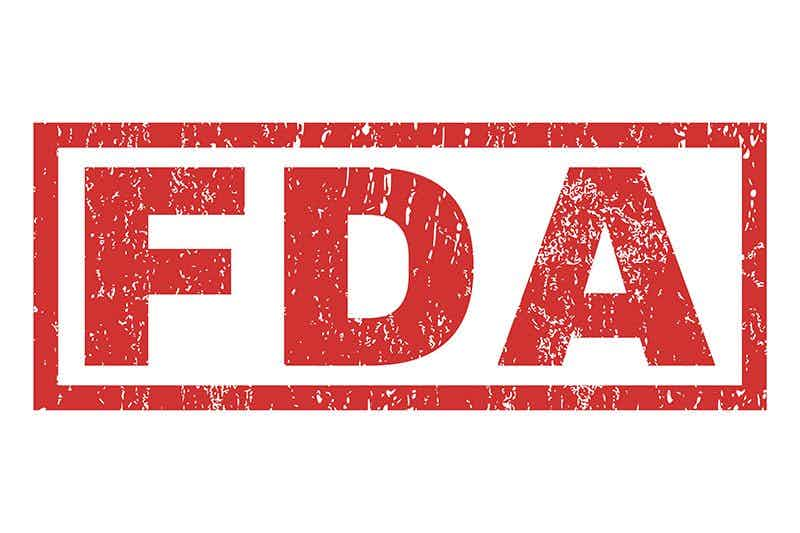In a dramatic announcement Friday morning, FDA Commissioner Dr. Scott Gottlieb postponed the future PMTA submission deadline in the deeming rule from 2018 to 2022, and promised a complete rethinking of tobacco, smoking, and nicotine by the agency.
The postponement will allow currently marketed vapor products to continue to be sold for at least four more years, which will give the vaping industry some breathing room to work on a new legislative strategy, and possibly to have some input into the new FDA plans.
It will also give vapor businesses — especially vape shops — the confidence to expand and reinvest in growth. The small- to medium-sized vapor businesses that represent the heart of the vaping movement have been hit hard by the FDA’s actions.
The Commissioner spoke a lot about reducing nicotine in cigarettes, which has been popular among some in tobacco control for a long time. Combining the possibility of very-low-nicotine cigarettes (VLNC's) with the availability of high-nicotine vapes may be a clever way of getting hardline tobacco control zealots to buy into a strategy that leaves e-cigarettes and tobacco harm reduction in the regulatory mix. Or it may be too clever, and open a messy debate that leads nowhere.
Here are some of the main concerns of vapers and how they were dealt with:
Flavors
The issue of flavors is front and center, since it is the anti-vaping lobby’s biggest current talking point. “In order to further explore how best to protect public health in the evolving tobacco marketplace, the agency also will seek input from the public on a variety of significant topics, including approaches to regulating kid-appealing flavors in e-cigarettes and cigars,” says the FDA press release.
The fact is, there is no way to relax the regulations on vapor products without addressing the issues that most concern the tobacco control zealots. If they were shut out of the discussion on all fronts, the entire process would become the worst kind of political tetherball, with each successive administration scrapping and redoing the regulations.
The focus on flavors will make many nervous — and probably rightly so. But the FDA press release specifically mentions that comments will be sought not just on the possibility that flavors entice children to try products, but also on the possible ability of flavors to help “some smokers switch to potentially less harmful forms of nicotine delivery.”
Deadlines
Deadlines that have already passed will not be affected. Age requirements will remain the same. And some future deadlines will not be affected either, including “required warning statements, ingredient listing, health document submissions, harmful and potentially harmful constituent reports, and the removal of modified risk claims.”
The primary change is to the November 8, 2018 deadline to submit premarket tobacco applications (PMTA) for products already on the market. That date now is August 8, 2022.
Product standards
Among the complaints vapers and the vape industry have about the deeming process is the lack of direction on what the FDA expects from manufacturers. That may be addressed soon.
“To complement these larger policy considerations, the FDA plans to issue foundational rules to make the product review process more efficient, predictable, and transparent for manufacturers, while upholding the agency’s public health mission,” says the press release.
“Among other things, the FDA intends to issue regulations outlining what information the agency expects to be included in Premarket Tobacco Applications (PMTAs), Modified Risk Tobacco Product (MRTP) applications and reports to demonstrate Substantial Equivalence (SE). The FDA also plans to finalize guidance on how it intends to review PMTAs for ENDS.”
The agency promises guidance soon on promised standards for addressing “known risks” in vapor products, such as batteries and children being exposed to “liquid nicotine.”
Is this the answer we’ve been waiting for?
Vaping advocates for industry and consumers have worked exceedingly hard since the deeming rule was announced last year. This is a war that’s been fought on many fronts — in Congress and state legislatures, in the courts, and in the news media.
This announcement and the details to come will bring relief to a lot of people. But it’s really just the beginning of a new fight. Vapers and their allies need to make serious strides in acceptance by the public. And it has to happen while we continue the fight to shape this new FDA policy.
The Gottlieb plan cleverly attempts to be all things to all people, to get buy-in from a variety of opposing interests. That strategy often fails, because the plan can’t be the perfect answer for everyone. Tobacco control hawks will decry the delay in deeming enforcement and see it as a gift to the tobacco industry. Cigarette manufacturers will oppose the serious look at reduced-nicotine cigarettes.
And the vaping industry will face the same worries it has now. Will all the talk about child-tempting flavors mean a ban on the products that work best? If flavor availability is greatly reduced, it favors the tobacco companies with their limited variety but huge distribution network.
In fact, a reprieve from the FDA almost certainly means that challenges at the state and local levels will intensify. There is nothing in the FDA plans that will prevent a state from taxing e-liquid, or a city from restricting access to flavors. Expect lobbying efforts by anti-nicotine and tobacco groups to shift to the state and local levels, as they fight to maintain their influence and power.
The vapor industry — and the vapers that depend on it — have to draw together at this moment. Now is the time to gather our forces, to raise money, to plan carefully, and to try build a (mostly) unified strategy.
So today celebrate. Have a party. Pop the champagne. Then get ready to fight with renewed strength.

Jim McDonald
Vaping for: 13 years
Favorite products:
Favorite flavors: RY4-style tobaccos, fruits
Expertise in: Political and legal challenges, tobacco control haters, moral panics
Jim McDonald
Smokers created vaping for themselves without help from the tobacco industry or anti-tobacco crusaders, and I believe vapers and the vaping industry have the right to continue innovating to give everyone who wants to use nicotine access to safe and attractive non-combustible options. My goal is to provide clear, honest information about vaping and the challenges nicotine consumers face from lawmakers, regulators, and brokers of disinformation. You can find me on Twitter @whycherrywhy


